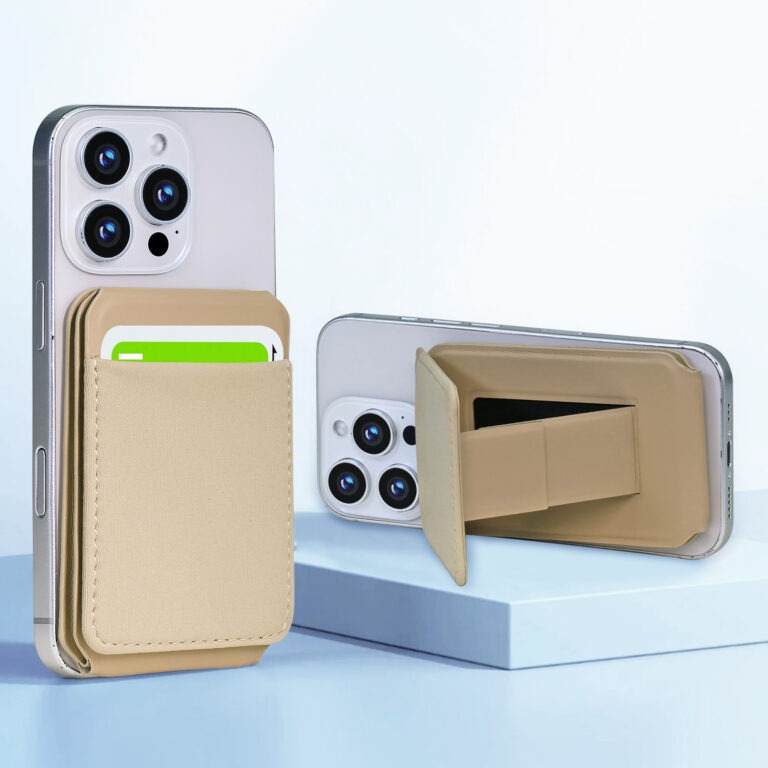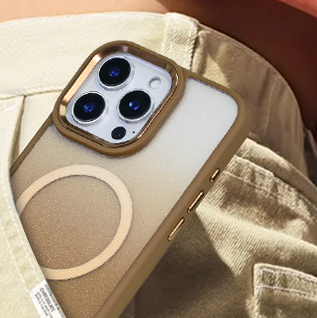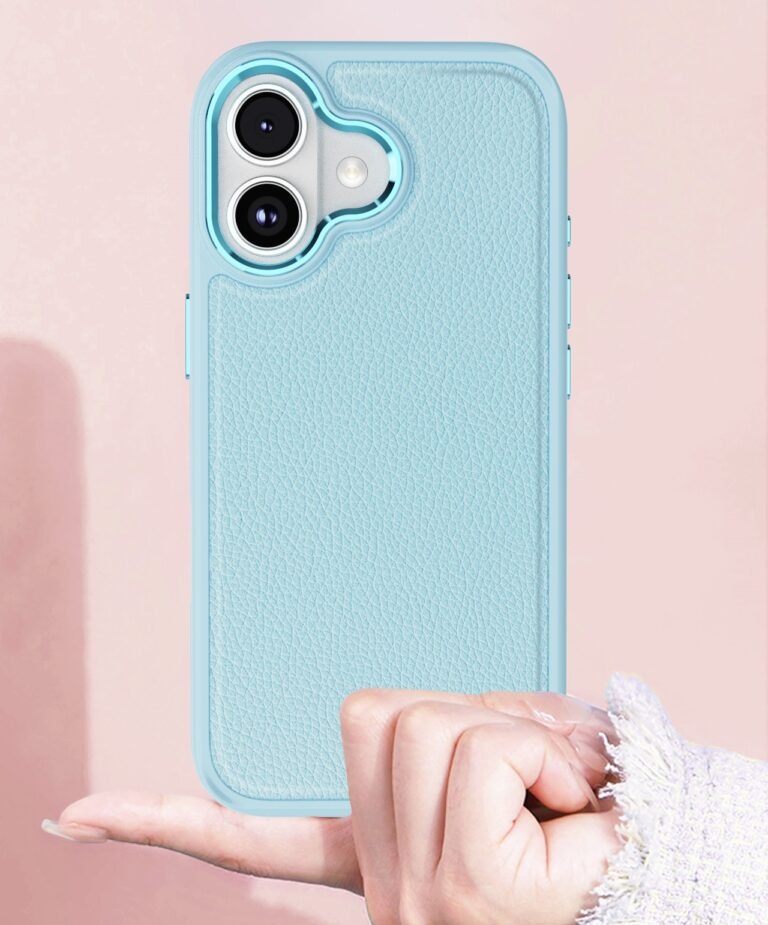The custom phone case market has exploded into a fiercely competitive arena where countless sellers vie for customer attention. Yet many small businesses dive in blindly, launching generic designs that get lost in the noise while lucrative opportunities slip through their fingers. The difference between struggling sellers and thriving ones often comes down to one critical factor: strategic market research. Understanding what customers actually want, when they want it, and how much they’ll pay transforms guesswork into calculated decisions. Market research reveals seasonal trends that can triple your sales during peak periods and uncovers untapped niches where competition remains thin. This guide walks you through proven research methods specifically tailored for custom phone case sellers, from analyzing competitor blind spots to designing surveys that predict your next bestseller. You’ll discover how to identify demand patterns before they peak, craft targeted marketing that resonates with specific buyer segments, and make data-backed decisions that protect your investment while maximizing returns.
Understanding the Phone Case Market Landscape
The wholesale custom phone cases ecosystem operates across multiple tiers, from manufacturers and distributors to small retailers and print-on-demand sellers. This market divides into distinct segments based on price positioning and target demographics. Premium cases emphasize superior materials and intricate customization options, attracting consumers willing to pay $25-50 per unit, while budget-friendly alternatives focus on volume sales at $8-15 price points. Demographically, younger consumers aged 18-34 drive the personalization movement, seeking cases that express identity through artwork, photos, and trending designs. The market’s explosive growth stems from smartphone ubiquity and the shift toward self-expression through accessories. Consumers now view phone cases as fashion statements rather than mere protective gear, creating demand for seasonal rotations similar to clothing. However, small sellers face substantial challenges in this landscape. Established brands dominate search rankings and advertising space, while fast-fashion retailers rapidly replicate trending designs. Manufacturing minimums can strain limited budgets, and predicting which designs will resonate requires insight beyond intuition. The barrier to entry appears low, but sustainable success demands understanding these market dynamics. Sellers who recognize their position within this ecosystem and target underserved segments gain competitive advantages that pure product quality alone cannot deliver.
Conducting Competitor Analysis
Effective competitor analysis begins with mapping your competitive landscape across three categories: direct competitors selling similar custom phone cases at comparable price points, indirect competitors offering alternative personalization products like stickers or skins, and aspirational brands whose market position you aim to reach. Start by identifying 5-10 key competitors through Google searches for “wholesale custom phone cases” and “seasonal phone case designs,” then examine their product catalogs to spot patterns. Note which phone models they prioritize, their customization options (photo upload, text, pre-made designs), and how they structure seasonal collections. Pricing analysis reveals critical positioning opportunities—document their base prices, bulk discounts, and premium charges for rush orders or special materials. Beyond products, scrutinize their marketing channels by following their social media accounts, subscribing to email lists, and noting their advertising presence on platforms like Facebook and Google. Tools like SEMrush expose which keywords drive their traffic, while social listening platforms track customer sentiment in comments and reviews. Pay particular attention to customer complaints about shipping delays, quality issues, or missing design options—these represent opportunities for your differentiation. Examine their engagement rates to gauge authentic audience connection versus inflated follower counts. This intelligence transforms into actionable strategy when you identify what competitors overlook: underserved phone models, neglected seasonal themes, or customer service gaps that create switching opportunities for dissatisfied buyers.

SWOT Framework Application
Structure your findings using SWOT analysis to convert raw data into strategic direction. List competitor strengths like established supplier relationships or extensive design libraries, then identify weaknesses such as limited customization turnaround or poor mobile shopping experiences. Opportunities emerge where market demand exceeds competitor supply—for instance, if major sellers ignore lunar new year designs despite significant Asian-American customer bases, you’ve found a seasonal gap. Threats include competitors’ ability to rapidly copy successful designs or their superior advertising budgets. A practical case study: analyzing three top sellers might reveal none offer eco-friendly seasonal collections despite growing sustainability concerns, presenting a differentiation angle that attracts environmentally conscious buyers while avoiding direct price competition with established players.
Identifying Seasonal Demand Patterns
Timing separates profitable seasonal launches from clearance rack disasters in the custom phone case market. Retailers who stock Halloween designs in October miss the critical August-September ordering window when consumers plan their purchases. Begin by analyzing historical sales data from your own store or industry reports that track search volume spikes for terms like “Christmas phone cases” or “summer beach designs.” Google Trends provides free access to five-year search patterns, revealing that back-to-school demand peaks in late July, while Valentine’s Day interest surges six weeks before February 14th. Major seasonal opportunities include winter holidays (November-December), Valentine’s Day (January-February), graduation season (April-May), summer themes (June-August), and back-to-school (July-August). However, regional variations dramatically affect demand timing—Australian sellers must flip Northern Hemisphere calendars, while markets with significant cultural diversity require tracking Lunar New Year, Diwali, or Ramadan alongside mainstream holidays. Examine Amazon’s “Movers and Shakers” category for phone accessories during different months to spot emerging seasonal trends before they saturate. Social media hashtag volume for phrases like “#fallphonecase” or “#beachvibes” signals rising consumer interest 4-6 weeks before peak buying periods. This advance notice allows small sellers to finalize designs, secure inventory, and launch marketing campaigns precisely when buyer intent reaches maximum levels, avoiding both premature launches that drain ad budgets and late entries that miss the profit window entirely.

Creating a Seasonal Product Calendar
Build a 12-month production roadmap working backward from target launch dates. For a November 1st holiday collection launch, schedule design finalization by August, supplier samples by September, and bulk orders by early October to accommodate manufacturing and shipping lead times. When sourcing from manufacturers like runsun case, factor in their production schedules and minimum order quantities during peak seasons to ensure timely delivery. Map cultural events relevant to your target demographics—Pride Month in June, Oktoberfest themes in September, or sports championship seasons. Align inventory quantities with demand intensity: order conservatively for experimental themes but stock deeper for proven seasonal winners like Christmas designs. Include buffer periods for quality checks and potential shipping delays, particularly when sourcing internationally. This calendar transforms reactive scrambling into proactive execution, ensuring your seasonal offerings arrive when customers actively search for them rather than after trends fade.
Designing Effective Customer Surveys
Customer surveys transform assumptions into validated insights when executed strategically. Your primary objectives should focus on validating design concepts before committing to inventory, gauging price sensitivity across different customization tiers, and understanding purchase triggers for seasonal collections. Distribution channels determine response quality—email surveys to existing customers yield higher completion rates since recipients already trust your brand, while social media polls on Instagram Stories or Facebook groups reach broader audiences but generate shorter responses. For wholesale buyers specifically, LinkedIn outreach or trade show follow-ups access decision-makers who influence bulk orders. Craft questions that avoid leading respondents toward predetermined answers. Instead of asking “Would you love our new floral spring collection?” use neutral phrasing like “Which design themes interest you for spring: floral, geometric, abstract, or minimalist?” Include a mix of closed-ended questions with rating scales for quantitative analysis (“Rate your likelihood to purchase holiday cases in October on a scale of 1-10”) and open-ended prompts for qualitative depth (“What frustrates you most about current custom phone case options?”). Keep surveys under eight questions to maintain completion rates above sixty percent. Test pricing tolerance through conjoint analysis questions that present feature bundles at different price points, revealing which attributes customers value enough to justify premium charges. After collection, segment responses by demographics and purchase history to identify patterns—younger respondents might prioritize trendy designs while corporate buyers emphasize durability. Cross-reference quantitative scores with qualitative comments to understand the reasoning behind numerical ratings, turning raw data into actionable product development directions.

Interpreting Survey Data for Product Development
Aggregate responses to identify clear winners—if seventy percent of respondents rate minimalist seasonal designs as highly appealing while only twenty percent favor elaborate graphics, prioritize cleaner aesthetics in your collection. Look for material preferences that justify cost differences, such as willingness to pay extra for eco-friendly options or shock-absorbent features. Track emerging customization requests like monogramming or interchangeable designs that competitors haven’t widely adopted. Avoid common pitfalls like overweighting vocal minority opinions or confirmation bias where you emphasize data supporting preexisting beliefs while dismissing contradictory findings. Instead, let unexpected patterns challenge your assumptions—if survey data reveals strong interest in niche themes you hadn’t considered, investigate further before dismissing them. Use this intelligence to refine design mockups, adjust pricing structures, and sequence product launches according to validated demand rather than intuition.
Developing Niche Marketing Strategies
Market research gains value only when translated into targeted campaigns that reach the right buyers at optimal moments. Platform selection begins with understanding where your identified customer segments spend attention—Instagram and TikTok dominate for visually-driven products like custom phone cases, particularly when targeting consumers under thirty-five who respond to aesthetic content. Pinterest captures users actively planning seasonal purchases, making it ideal for holiday and event-themed collections. For wholesale buyers, LinkedIn facilitates B2B outreach while industry-specific forums connect with retailers seeking unique inventory. Content types should showcase real-world usage through user-generated content campaigns that encourage customers to share photos with branded hashtags, building social proof while generating free promotional material. Seasonal lookbooks presented as carousel posts or short videos demonstrate how designs complement specific occasions, helping buyers visualize products in context. Behind-the-scenes content showing customization processes builds authenticity and justifies premium pricing by highlighting craftsmanship. Influencer collaborations amplify reach when structured strategically—provide micro-influencers with seasonal collections in exchange for authentic reviews rather than scripted promotions, ensuring their endorsements resonate with engaged followers. Target influencers whose audiences align with your survey-identified demographics and whose content aesthetics match your brand positioning. Negotiate usage rights to repurpose their content across your own channels, extending campaign value beyond initial posts. Track campaign performance through platform analytics and UTM parameters that connect social traffic to actual conversions, revealing which content types and platforms deliver profitable customer acquisition rather than vanity metrics like follower counts.
Budget-Friendly Tactics for Small Sellers
Micro-influencers with five thousand to fifty thousand followers typically accept product exchanges or modest fees while delivering engagement rates triple those of celebrity accounts, making them ideal for constrained budgets. Launch seasonal hashtag campaigns that encourage customers to share their customized cases using branded tags like #MyHolidayCase, then feature top submissions on your profile to incentivize participation. Segment email lists based on purchase history and survey responses, sending personalized seasonal recommendations to customers who previously bought similar themes—someone who purchased floral spring cases receives priority access to summer botanical designs. This targeted approach increases conversion rates while reducing wasted ad spend on disinterested recipients.
Turning Research Into Sustainable Growth
Market research isn’t a one-time checklist but an ongoing discipline that separates sustainable custom phone case businesses from short-lived ventures. The sellers who consistently profit understand that customer preferences shift with cultural trends, competitor strategies evolve, and seasonal demand patterns fluctuate year over year. By systematically analyzing competitors, tracking seasonal cycles, surveying target buyers, and refining marketing approaches based on data rather than assumptions, you transform uncertainty into competitive advantage. Each research method covered—from SWOT analysis to customer surveys to niche campaign development—builds a framework for making informed decisions about which designs to produce, when to launch them, and how to reach buyers most likely to convert. Start immediately by implementing one concrete technique: conduct a competitor analysis this week to identify three gaps in their seasonal offerings, or launch a simple five-question survey to your existing customers asking about upcoming holiday preferences. These small research investments yield returns that compound over time as you accumulate market intelligence competitors lack. The custom phone case market rewards sellers who listen to data signals, adapt quickly to emerging patterns, and consistently deliver what customers actually want rather than what seems appealing in theory. Your research advantage becomes the foundation for long-term profitability in this dynamic marketplace.






